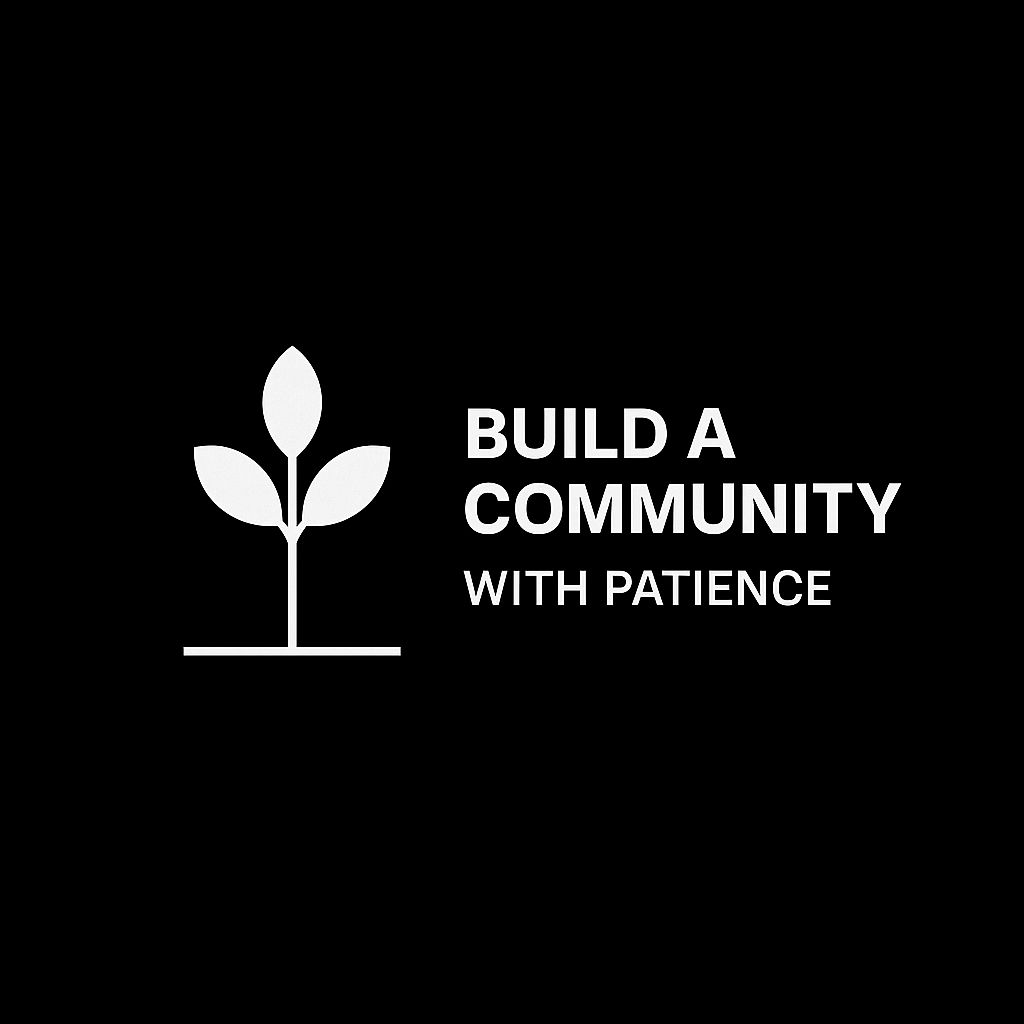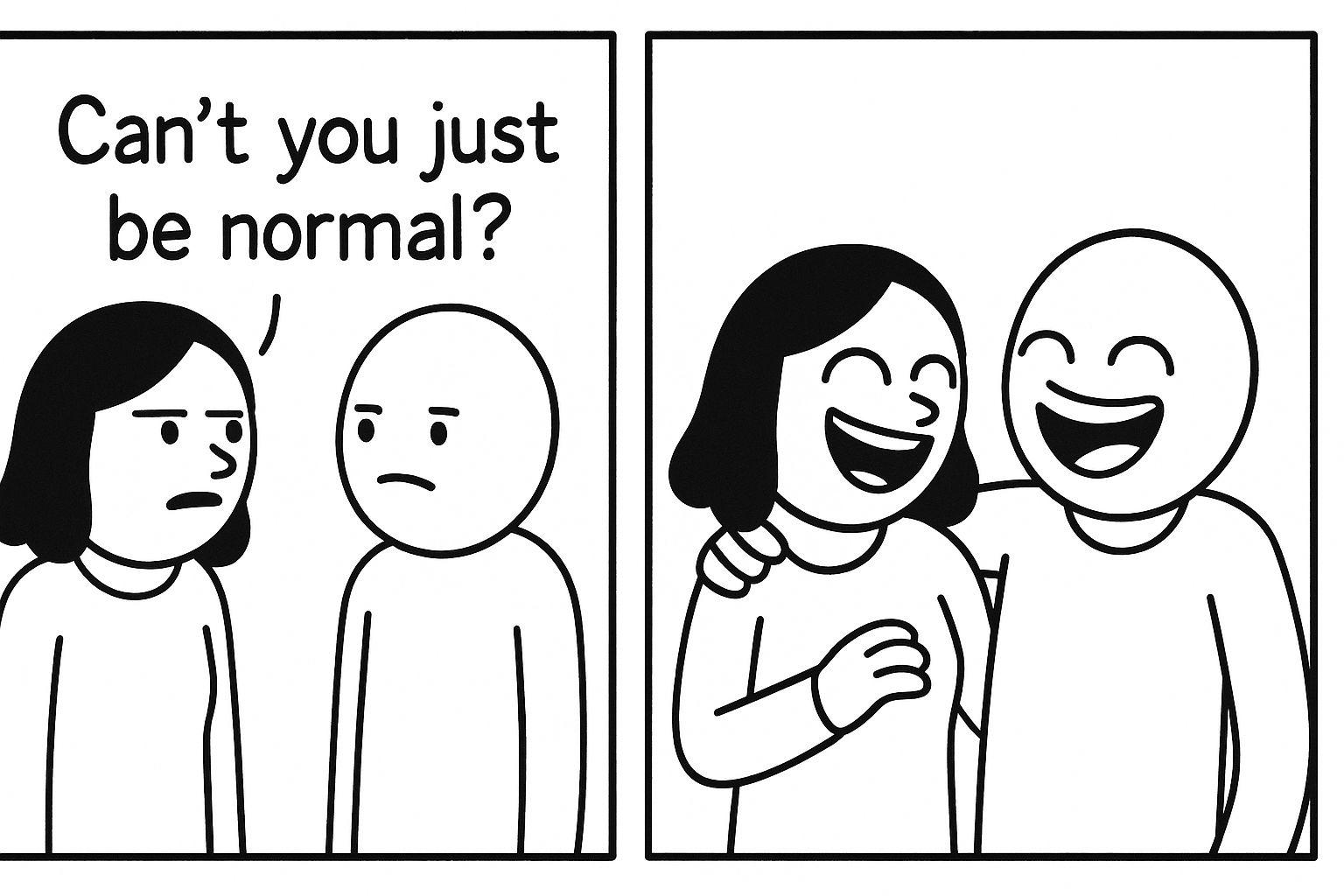When a place gets too big too fast, it may lose what made it great at first. Quick growth can break trust, common beliefs, and links between people, making the group feel lost and messy. Here’s why this happens and what to do about it:
- Lost Focus: New people might not fit with the first goal, weakening what the group stands for.
- Less Trust: Fast growth makes it hard to keep strong bonds, which can lead to mix-ups and fights.
- Weak Talks: Chats get less deep, as people find it hard to relate in a bigger, new space.
- Tired Leaders: Those in charge feel the strain of more people, which can let problems grow and cause unhappy members.
Main Fixes:
- Set Clear Rules: Make sure new members know what is expected to keep the group's aim.
- Careful Welcome: Bring new people in a way that fits with the group's way.
- Check and Fix: Often look for signs of trouble and fix them.
- Choose Depth Over Size: Aim for deep growth, not just more people.
Big growth can add new views and make you more seen, but needs good care to keep the group’s heart. Leaders who care about links and shared values will help their place do well, even as it gets bigger.
How to Scale Culture as a Rapid-Growth Start-Up with the CPO of Resilience
How to Make Community Culture Work
Groups do well when they use the same values, norms, and ways that make people feel they belong. When I see a group doing great, it's because these things fit well together, making a place where people join in and connect.
A look at some study tells us that groups with strong values and norms see up to 30% more action than those without clear ones. That's big - it's the gap between a group people drop by at times and one they dive into with joy. This shows how key it is to shape what a group stands for to keep people coming back.
Building Who We Are in Online Groups
The web has changed how we make groups, letting us link up by shared likes and aims no matter where we are. I've seen this on things like Discord for game makers, Facebook for new moms, and Skool for those starting businesses. These spots offer tools to make a shared "us" fast.
What catches the eye is how quick a group can form its own way online. While it could take years for face-to-face groups to feel strong ties, online ones can get there in weeks - if things are set up right. Members start to pop up with their own jokes, unique words, and special ways that others won't get.
The trick is in making identity on purpose. Groups that let an identity happen by luck often are split or vague about their purpose. But those who make it a point to shape who they are dodge these issues, even as they get big fast.
The top online groups often start what I tag "identity anchors." These are key habits, signs, or tales that everyone gets behind. These can be weekly meetups or a big goal that holds everyone together. A clear, strong identity helps not only to keep the group tight but also makes their talks better.
Why Culture Means A Lot for Being Part of a Group
Culture isn’t just extra; it's key for deep group action. When folks feel they fit and share values, they join in more, help out, and give more. This starts a cycle where being active brings even more action.
Minds think so too. Social Identity Theory shows that feeling part of a group boosts loyalty and being there. Also, Dunbar’s Number tells us there's a cap to how many close relationships we can have. Without a strong push for culture, big groups often lose tightness as they grow.
I've watched these moves play out. In the UK, the Big Local plan showed how building a sense of fit and better local ties led to healthier minds and happier people. This was because the setup put culture first, pushed for action, and made people feel they owned part of it.
A good group vibe not only lifts up how much people take part - it also makes them feel happy and safe. People know what will come from talking to each other, they feel okay to be open, and know how to add value in good ways. When we don't care for the vibe, groups can lose touch, have less activity, and even face fights, making folks unhappy.
One good way is a clear welcome plan that shows new folks the group's rules and what's good here. Groups that focus on this kind of start see a 20-40% boost in how long people stay in the first half year. It's more than just showing them how to use the site - it's about making them see what drives the group.
Looking at a group with a strong vibe versus one without is a big switch. It's like seeing a place where everyone knows each other’s names against a spot where folks just walk past without looking. Both may have the same number of people, but only one feels like home.
Fast Growth Hurts Group Feel
Fast, wild growth can throw off a group's careful mix, often watering down its main thoughts and harming the trust and team ups that keep it strong. Growth isn't bad all the time, but how fast it happens can mess things up if it's not planned or well handled. If new people aren't brought in well, the group's base starts to break.
When Trust and Shared Ways Go Wrong
Trust in a group works like a web - each tie makes it stronger. But when growth is too quick, that web gets too thin and can break from too much pull.
A perfect example is what happened with the Discord server for the game Among Us. When the game got big in late 2020, the server jumped from a few thousand to over 400,000 members. Mods couldn't keep up, mean acts went up, and the once good group fell into mess. Many who were there from the start left, feeling that the place was not the warm spot it used to be.
This fits with Social Identity Theory, which tells how new waves of people can make old members feel shut out. They begin to see new people as not one of them, who don’t hold the same ways, making splits not unity. With no time to get new people into the group well, the group's shared ways get doubted, causing mix-ups and breaks.
How Growth Splits How Members Act
Fast growth doesn’t just change who is in the group - it also changes how members act, often making things worse.
In big, fast-growing groups, talks tend to be less deep. Instead of real chats, talks get short, stuck at the top or as quick one-time words. Members stop making real ties and start to see the group more like a spot to get posts than a team place.
This often comes from a drop in each person taking charge. In big groups, members think others will keep talks good or fix things when bad stuff comes up. The end? Less help in and more fights.
I’ve seen this in Facebook Groups about local parent help. As these groups got big fast, the quality of insights dropped, and the warm feel that was there at first started to slip. Often, smaller groups break off as members try to get back that first close tie.
One community I’ve been repeatedly impressed by is the Skoolers community of community builders. The Founder of Skool Sam discussed this on a recent podcast. It was a great conversation, and the one key thing that stuck out to me was that despite being more than 50,000 people the group still has its hardcore regulars who help keep the culture. The episode even ends with an inside joke from the community - questions getting cut off at the last second!
Skoolers is a special case because in small groups, people all know the same norms, fun secrets, and what is not said out loud. But when many new folks come, these common things start to fade away. Jokes do not work, nods are not caught, and the little ways people talk that made the group great vanish. The next table shows how the good parts of fast growth can be blocked by the big problems.
Table: Good vs. Bad of Fast Growth
| Good Things | Things that are a bit tougher |
|---|---|
| Many new ideas and views | Loss of close ties and deep talk |
| More help to work with | Bare and short talks |
| More people see and know you | Wearing away of common beliefs |
| More chances to meet folk | More fights and tight groups inside |
| Chance to make big changes | Hard to keep rules in check |
| More people see what you make | Too much for the leaders to handle |
Fast growth can bring big gains, like more tools and a wider net. Yet the downsides may soon outdo these goods if growth isn't watched over well. Many groups cheer when they hit big member numbers, only to find out they've lost the deep links that made them stand out. Old members might quietly go, leaving behind just a shell of what was once a strong place.
This isn't just talk. Studies back up such points. Research on groups going through quick shifts or big increases in people show clear drops in close ties and rises in fights. For instance, in areas that are becoming more posh, though 44% of studies saw some safe effects like less fights, most showed that life quality went down for those who had been there long.

Web groups face these same tests. Those that look to grow numbers before keeping a good vibe may get high counts of members but miss real talk. They risk turning into what I think of as "ghost towns full of people": lots of folks, but no true group feeling.
How To Tell If Your Group's Heart May Be Fading
Groups tend to begin as close circles, bonded by shared goals and strong ties. Yet, as they expand, they risk losing the core traits that made them stand out. It's easy to focus on adding new members and checking basic interactions, but the real threat is missing the small signs that your group's spirit is weakening. Let's look at key signs, from new folks expecting different things to early breaks in trust.
When New Members Expect Something Different
A clear warning sign is when new members come in expecting things that don't fit with what the group is about or how it feels. This often happens when a group grows fast, and the message about what the group is for becomes unclear or too wide.
"Unless specified, people come into communities with unclear and sometimes unrealistic expectations." - Fabian Pfortmüller
This mismatch can show up in many ways. Some new folks, hurt by past bad times in other groups, think this one will be slow or low on trust. They might just watch from the side for months, unsure and waiting for proof that the group is worth their time.
Some enter with too high hopes. They look for fast bonds, non-stop fun, and just-right talks. When things don't go as planned, they may get mad, push too hard, or just stop joining in.
Then there are those who see the group as a quick fix. Without set rules or clear hopes from the start, these people can fill the group with ads for themselves, ask for too much, or take without giving back good stuff.
Apart from these mixed hopes, small changes in how folks join in can also show that trouble may be coming.
Bad Signs for the Vibe
How folks talk can tell a lot about how well a group’s vibe is doing. Here are some things that often show it's going downhill:
- Talks get shallow and not new. Instead of adding to what was said before, the same easy things keep coming back up, making the group's shared know-how and worth less.
- Answers come slow and don't have much thought. A place once great for deep chats can turn into a spot where replies are quick and on the surface, more like a quick chat online than a place for real talks.
- Shared words and laughs inside the group fade. In strong groups, folks come up with their own special words or jokes. But when lots of new people join fast, these things can go as the main group gets lost.
- Joining in goes from real to just for show. People may start sharing stuff just to get likes or comments, choosing to be seen over real talking. This changes the aim - from helping each other to just getting seen.
Early Signs of Trust Issues
Trust is key for any group, and losing it can be a sign of bigger problems in the vibe. Here are some signs that trust may be fading:
- People add warnings to their tips. When folks start their advice with "I’m not a pro, but..." it can mean they're not sure how their ideas will be taken or seen.
- Hidden talks go up while open talks go down. A clear move to direct messages or smaller cliques often means folks don't feel at ease or safe in the big group anymore.
- Fixing problems happens after they blow up, not before. When leaders are always dealing with fights or emergencies instead of building good vibes, it shows that trust in the group is falling apart.
- Key people leave in silence. When old, active members start to pull away or exit without saying why, it's a big sign they don’t feel part of or backed by the group anymore.
These changes don't show up all at once, but when they start, they can grow fast. Groups that do well with more people are those where leaders see these early signs and act to keep the spirit that makes their spots special.
sbb-itb-494c2a9
How to Grow Without Losing What Makes Your Group Special
When your group gets big, you don't have to give up what makes it stand out. The secret is to make plans that keep your main values safe while letting new people join in. Many fail because they just add more folks without making sure they know what the group cares about. The best groups keep growing by teaching their ways, hearing their people out, and often checking how healthy the group is.
How to Welcome New People
A good welcome process is key to keep your group's feel as it gets bigger. It’s not enough to just give new folks a set of rules. A strong welcome digs deeper, showing why the rules matter and what the group is really about. Sadly, many treat this as a quick list: read the rules, say who you are, and jump in. But the best groups use the welcome time to dip new members in their key values.
A great welcome tells a tale. It shares why the group was made, points out good things other members do, and sets clear hopes for how to act. Some groups in places like Discord and Skool do more like quizzes on values and first chats to make sure new ones get the group vibe from day one.
For instance, in 2023, the On Deck group that helps folks learn started having live welcome talks and chats about their values. This way they kept more than 90% of their members happy and dodged value clashes, even when their size doubled.
Putting new folks with old hands in their first weeks is another strong move. This buddy system lets newbies see the group’s values in real life, not just in words. It also lets old members help shape the feel by showing the ways they want to see.
Hear Your People to Keep Things Right
Big growth can hide problems. What looks like a happy group might just be small talks or members feeling out of touch. To dodge this, good groups don’t just ask for thoughts - they make changes based on them.
Having monthly talks, feedback lines, and open chats are great ways to know how members see the way the group is going. Some Facebook Groups and Reddit spots even use secret suggestion boxes to find shifts in how the group feels. You’ve just gotta make sure that you’re ok getting rejected and can move forward. I love this quote from the Knowledge Project.

These 6 steps make a huge difference when it comes to hearing from your members. They will also be a reflection of how you treat them - so be interested in who they really are.
Groups that do well as they grow often have regular checks on their culture. For example, a NoCode group on Slack has group talks every month about what’s good and what’s not. These talks let leaders fix things fast, keeping the group friendly and helpful.
It's key to make sharing thoughts easy and to show that these thoughts make a difference. When folks see that their words count, they’re more likely to say what bothers them. This keeps a loop of feedback that helps you stay in tune with what your group needs as it grows.
Group Check-Ups and Trust Checks
At times, you need a fresh look to really see how your group is doing. Doing checks often can give a full look at your ways, how well you engage, and if you live up to what you say. These checks do more than just gather thoughts; they give clear facts to help you see if your group is getting stronger or weaker at its core.
Such checks look at things like how open you are, how members are doing, and if the leaders are honest. They can spot issues that you might miss day to day. Tools like ProveWorth’s trust profiles check if a group is keeping its word and meeting the standards members expect. These checks often come with steps to fix problems before they hurt your group’s good name or the experience of members.
For example, the Farnam Street Learning Community does checks four times a year with feedback loops to make sure they stay true to their main goal. This has let them keep high levels of engagement and trust, even as their group has grown by 60% each year. By using checks as a way to keep getting better, they’ve stayed true to their values.
Having an outsider check your group can also make your group stand out. When people looking to join see your group has been checked for honesty and quality, it shows that you care more about trust and fitting in than just numbers.
Groups that do well as they grow are those that teach values from the start, set up ways to catch problems early, and do regular checks to be honest about their health. While it takes work at first, these steps make sure your group grows without losing what makes it great.
Ways Leaders Keep Community Culture Alive
As groups get big, keeping their key beliefs intact is tough and needs leaders who really care and act. When a group grows fast, its culture can't stay strong by itself; it needs special care. I've seen many groups lose what made them special because leaders didn't step up. The best leaders I've met see their group's culture as a garden needing daily work, not something that grows well alone.
Good leading here doesn't mean running every little thing or watching folks too close. It means choosing how to shape the group vibes. Good leaders keep what's unique about the group safe, while also letting new people add their views. These steps help lessen the risks that come with quick growth.
Sharing Stories and Rites to Keep Core Beliefs Strong
A big way leaders can make an impact is by sharing stories. Stories make a group's values feel real, not just like dry rules. When I check groups for ProveWorth, I can see if leaders get this. In top cases, leaders keep telling stories that show why their values or rules are there.
For example, I checked a Discord group for business owners where the founder shared a member's story in each monthly call that showed their core values. These stories weren’t just nice tales - they gave clear models of the success vibes in that group. This helped new folks get what's really important in the group, not just making money.
Rites are another strong way to show values. Some groups I've seen do "value spotlights", where members talk about how the group’s ideals have touched their work or lives. Others have weekly tales where founders tie today's issues to the group's main aim.
The trick to making these rites work well is doing them often. Look at the Indie Hackers forum. They have regular show-and-tells and founder stories to keep the business vibe alive, even when more join. These aren't just any events - they're planned to keep showing what the group is about, week after week.
By always using stories and rites, leaders can quickly teach new members what’s expected, without having to spell it out. This is key in times of fast growth when there’s no time for one-on-one welcomes.
Making Clear Rules on Growth and Actions
Another key way leaders help is by setting limits. Groups that try to fit everyone often lose their main aim. Smart leaders know limits aren't about keeping people out - they’re to save the setting that makes the group worth being in.
The best groups I've looked at use methods like keeping member numbers low, having an application process, or bringing in new people in stages to manage how big they get. These steps keep interactions high quality and make sure new members fit with what the group stands for.
If we don't set clear lines, groups can fall into mess fast. I've watched how Reddit threads move from deep talks to wild scenes when the rules slack as more join in. Not having firm control leads to trolling, off-topic chats, and fights that push away key folk.
Good leaders set up more than just simple rules. They shape ways that state not only what you must not do, but also what to aim for. They use tools to handle issues quick, keeping big problems from growing.
At times, to keep a strong group feel, it means not growing too fast. This may look odd when everyone wants big numbers, but this way keeps talks good and people into it. Studies, like ones on Dunbar's Number, show that too many people without clear roles can break ties and lower trust. Wise leaders watch these things and shape how they grow the group.
Check Often and Talk Open
Talking well matters as much as setting rules. Regular checks, via big meets, polls, or Ask Me Anything (AMA) sessions, keep trust and link members to those leading. Yet, talk needs to dig deep. It must be all the time, clear, and really two-sided.
During the COVID-19 spread, groups with clear, open leaders ready to share and help did better. The same goes for managing growth. When folk see leaders clearly guiding the group right, they stick around and help keep the culture too.
It's about making ways to talk that are easy and matter. Leaders who ask for thoughts but don't react, or don't show how feedback changes things, lose trust fast. Members need real signs that their voice counts, more so when the group changes quick. You have to keep going, learning, and check back with people. It’s not a one and done project.

Studies back this way, showing clear leading and giving members power can boost the sense of belonging and mental good. Not doing this can turn people off or worse. The top leaders keep talks going, making sure it's not just for troubles but a key part of running the group.
Growing Smart: Keeping What's Important
Growth and who we are don't need to clash. With careful plans, places can get bigger but still keep their heart. From my work checking many communities for ProveWorth, I've seen that the best groups see getting bigger as a chance to improve rather than just adding numbers. They make sure each new person makes the group's heart stronger, not weaker. This links to what we talked about before: keeping trust as the group gets bigger.
Strong groups are sure about their aim and who they want to help. They stick to their main goal more than trying to please everyone. Some even grow slowly or stay small to keep their key values.
I’d call this values-first growing. Before they start big ad pushes or let lots of new people in, these places ask: "Will this bring in folks who match our values?" At each step, they pick quality over quantity.
Joining With Purpose
Places that handle fast growth well do it with clear joining steps. These steps do more than just tell the new rules or features; they show new folks what the group stands for and set clear hopes. As Mark Pierce, boss of Cloud Peak Law Group, says:
"Fostering a culture of trust begins with a leader who embodies it through words and actions. He inspires loyalty and confidence by making followers feel valued and empowered. Trustworthy leadership becomes the foundation upon which members thrive, and the community grows".
One of the best ways I've seen works pairs old and new members. New folks get paired up with the old hands who help them out and show them how the group works in real, helpful ways.
Keep the Group Going Strong
Once the base is set, it's key to keep checking in to keep the group's heart true. The toughest groups I've worked with have leaders who keep an eye on the group's spirit. They ask members how things are going, listen to feedback, and look out for signs the group is losing its way. These leaders treat the group's heart like a garden that always needs care. Checks mixed with good member intro make quick growth a chance to build trust not hurt it.

When groups do this well, they don't just grow - they do really well. Each new member, picked well and brought in well, keeps the group tight and special. The trick is knowing that trust - not just numbers - is what matters. By keeping trust and togetherness first, you make something that lasts. This is what sets apart groups that just get bigger from those that truly get better.
"Ensuring active participation requires more than just asking for member involvement. It demands inspiring each member to believe in their potential and empowering them to become the change they wish to see." - John Gardner, Co-Founder and CEO of Kickoff
This is the type of growth that we should keep safe.
FAQs
How can groups best use tech to support having a stronger community?
Online and offline groups can use tech like Skool.com to grow a strong feel of their own and closeness by making places for deep talks to grow. These spaces let members talk often, share their lives, and build trust - main keys for true ties.
Hosting live events or making talks happen now cuts down space gaps and makes for deeper talks. Studies show that when used with a clear goal, online tools can make social ties stronger, let more people in, and shape groups around shared beliefs.
By putting thought in design and making sure members are active, the right tech helps make lasting ties. I’ve seen it happen a ton and it’s more art than science, but there absolutely is a formula to utilize!


